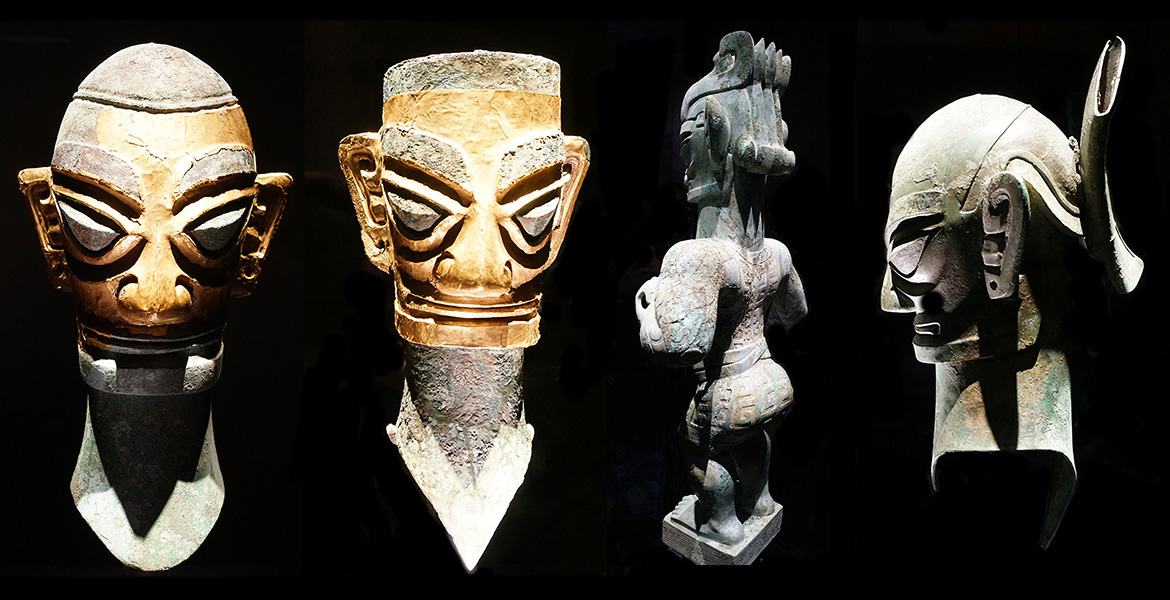NewsVoice visited the Sanxingdui Museum. The Ancient Sanxingdui civilization is one of the most enigmatic ancient civilizations of China. The museum exposes many of the mysteries found in the soil of Sichuan in south-central China.
The Sanxingdui civilization, which flourished in the Sichuan Basin, is a remarkable testament to the ingenuity and cultural richness of ancient China.
Researchers have through an intricate process managed to reconstruct artifacts that shed light on a culture that thrived over 3,000 years ago. This ancient civilization existed during the late Shang Dynasty period (1600-1046 BCE), and its discovery has redefined much of what historians understood about early Chinese history.
The people of Sanxingdui were advanced artisans, as evidenced by their sophisticated bronze casting techniques, jade carvings, and intricate goldwork. What sets Sanxingdui apart is the unique artistic style of its artifacts, which differ significantly from those of the contemporaneous Shang civilization in the Central Plains of China.
The artworks of the Sanxingdui civilization feature exaggerated and fantastical elements, such as large masks with protruding eyes and intricate geometric designs, indicating a distinct cultural and religious framework.

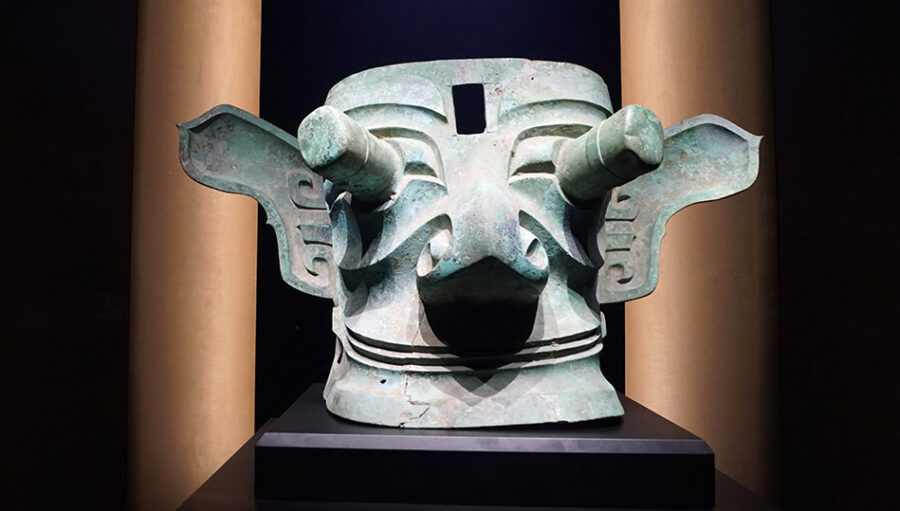
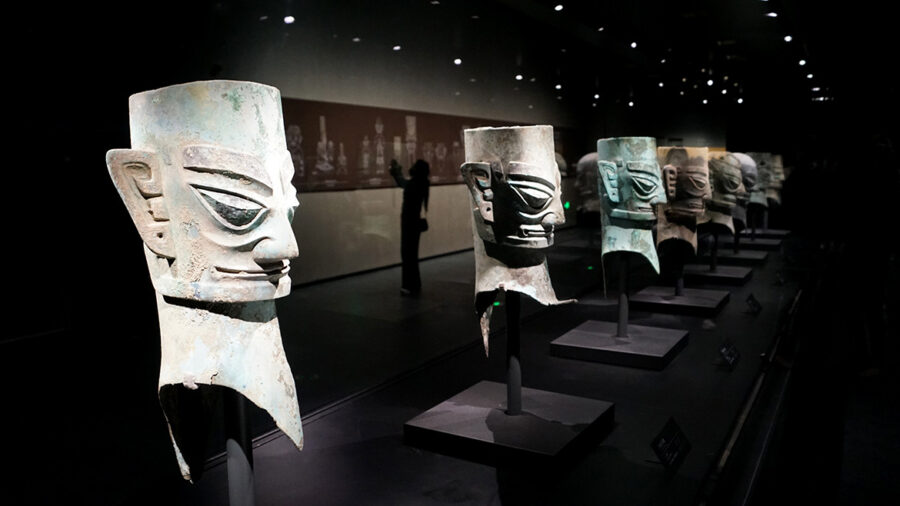
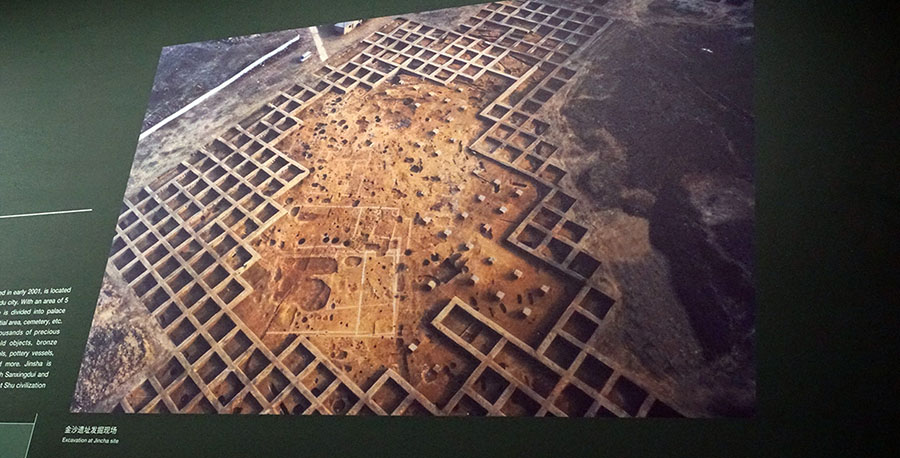
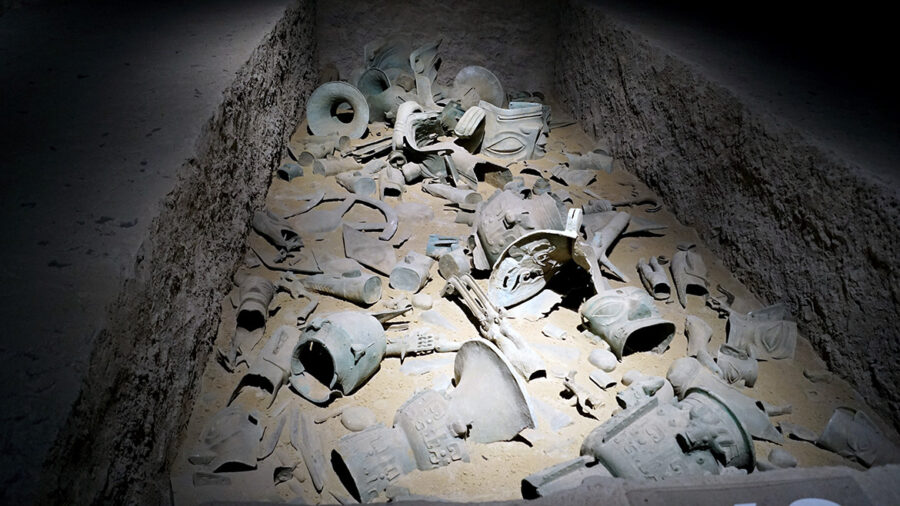
The Discoveries in the Sanxingdui Burial Pits
The Sanxingdui Museum showcases a vast array of artifacts unearthed from the burial pits discovered in 1986. These pits contained thousands of objects, many of which were ritually broken and buried. Among the most significant findings are:
Bronze Masks and Statues: The bronze masks are perhaps the most iconic symbols of the Sanxingdui civilization. These masks, with their large, almond-shaped eyes and intricate facial features, suggest a deep spiritual or religious significance. Some masks are large enough to indicate they were possibly worn during ceremonial practices or mounted on structures.
Gold and Jade Artifacts: The pits also contained a wealth of gold and jade items, including masks, scepters, and various ceremonial tools. The jade artifacts, often intricately carved, showcase the high level of craftsmanship and the symbolic importance of jade in their culture.
Elephant Tusks and Sea Shells: The presence of elephant tusks and sea shells in the burial pits points to a far-reaching trade network and the ritualistic significance of these items. This also indicates that the Sanxingdui people had access to resources from distant regions, showcasing their extensive connections and economic reach.
”China is very big. Early civilizations will not come from a single source” – Sun Hua, professor of archaeology at Peking University
Reconstructing the Sanxingdui civilization
The reconstruction of the artifacts found in Sanxingdui has been a monumental task, combining the efforts of archaeologists, historians, and conservators.
The process involves several meticulous steps to ensure the accurate preservation and interpretation of these ancient treasures.
Excavation and Documentation: The first step in reconstructing these artifacts is careful excavation. Archaeologists meticulously document the location and condition of each find. Advanced technologies like 3D scanning and photogrammetry are used to create detailed records of the artifacts’ positions and their surrounding context.
Conservation and Restoration: Once the artifacts are excavated, they undergo conservation treatment to stabilize them. This is crucial, especially for delicate items like bronze and jade, which may have been damaged by burial conditions. Conservators use a range of techniques, including chemical treatments and physical repairs, to prevent further deterioration.
Analysis and Interpretation: Researchers then analyze the artifacts to determine their original form and function. This involves comparing the finds with similar artifacts from other sites and cultures. Scientific methods such as X-ray fluorescence (XRF) and radiocarbon dating help in understanding the materials used and the approximate age of the objects.
”Judging from the information obtained so far, the Sanxingdui culture is likely to be a culture that stemmed from the predecessors of the ancient Shu Kingdom” – Sun Hua
Reconstruction: The physical reconstruction of the artifacts is a painstaking process. For instance, fragmented bronze masks are reassembled using molds and casts to recreate their original appearance. Advanced imaging techniques and 3D printing technology play a significant role in this phase, allowing researchers to piece together fragments without damaging the originals.
Exhibition and Education: Finally, the reconstructed artifacts are displayed in museums like Sanxingdui, where they are accompanied by detailed explanations of their historical and cultural significance. These exhibitions are crucial for educating the public and preserving the legacy of the Sanxingdui civilization.
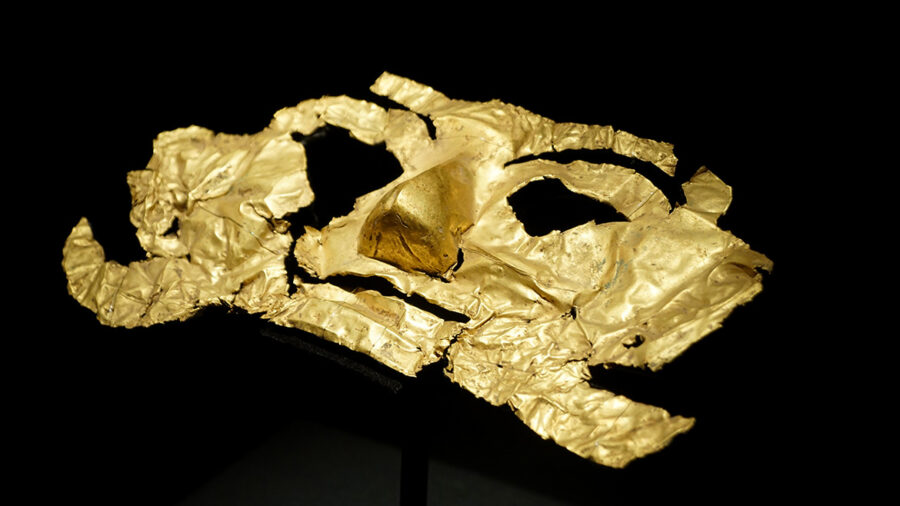
”The majority of the wares unearthed in the Sanxingdui Ruins show connections with the culture of the Central Plains” Jiang Song, a cultural studies expert
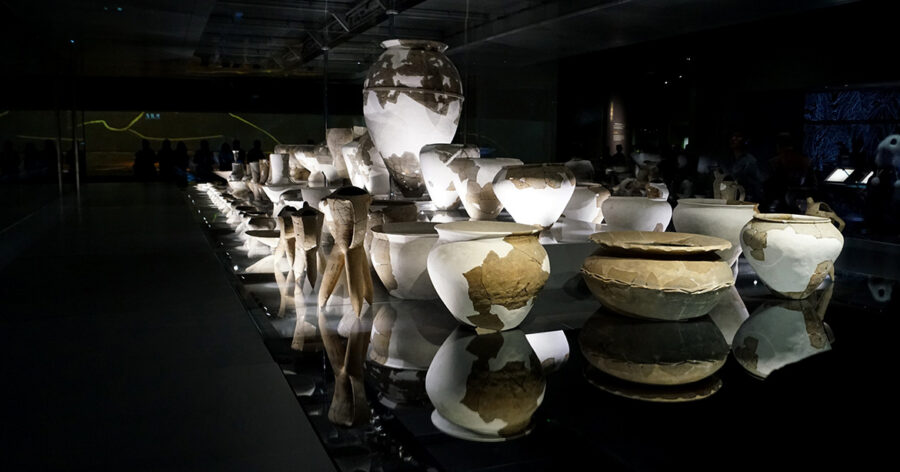
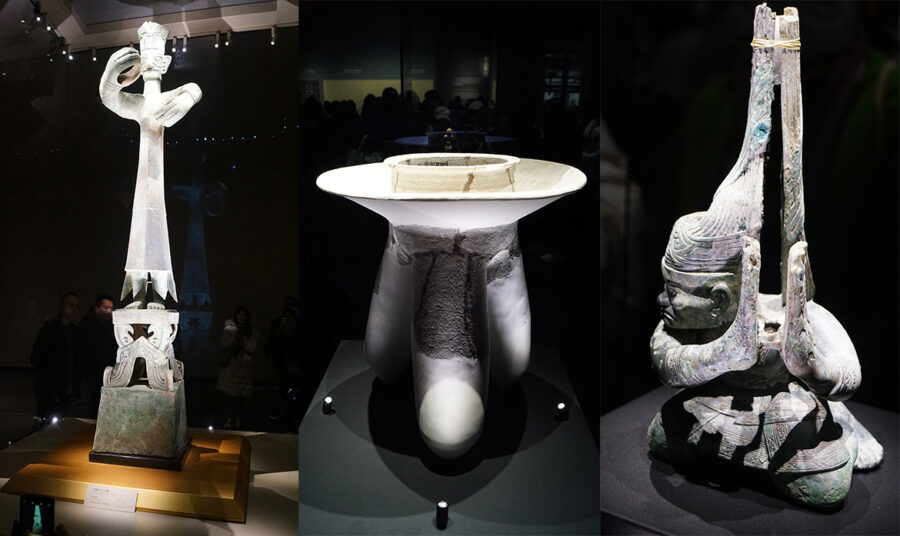
”The animal faces, fish or bird patterns were inherited from the Central Plains. Some bronze wares found in Central China’s Hubei Province and South China’s Jiangxi Province are very similar to the Sanxingdui relics” – Jiang Song
The visit by NewsVoice to the Sanxingdui Museum in December 2023 was more than just a journey through ancient relics; it was a walk through the annals of a forgotten civilization brought back to life through painstaking archaeological efforts.
The Sanxingdui Museum near Chengdu stands out as a light of cultural heritage, providing invaluable insights into the ingenuity and spiritual life of an ancient society. The meticulous reconstruction of the artifacts allows modern audiences to connect with the distant past, offering a profound appreciation for the artistic and cultural achievements of the Sanxingdui people.
By T. Sassersson
Related and sources
- Sanxingdui Museum
- Karl Wang: China’s Food Production was Developed by China’s Innovators and Workers
- Global Times: Are China’s Sanxingdui Ruins linked to foreign or even alien civilizations?

